Kansas City Zoo
Introduction
Text-to-speech Audio
With over 200 animal species on site, visitors of the Kansas City Zoo can experience an interactive journey around the world through this 202-acre nature sanctuary. Originally opening in 1909, the Swope Park Zoological Garden contained one building with 12 mammals, an eagle, and a few other birds. Steady improvements have been made throughout the years to increase the number of exhibits and currently houses over 1,700 animals. The Kansas City Zoo became a private non-profit organization in 2002, is accredited by the Association of Zoos and Aquariums and takes part in several conservation efforts. They also offer an array of experiences, programs, and activities for visitors of all ages.
Images
The Kansas City Zoo main entrance.
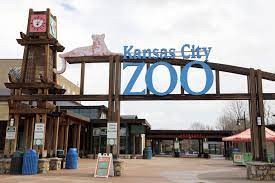
The Tropics building at the Kansas City Zoo was the first building ever constructed on site in 1909.
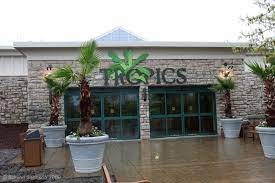
The Swope Park Zoological Garden's "Bird and Animal House" c. 1915. It was converted into the Tropics building in 2009. Photo courtesy of Missouri Valley Special Collections, Kansas City Public Library.
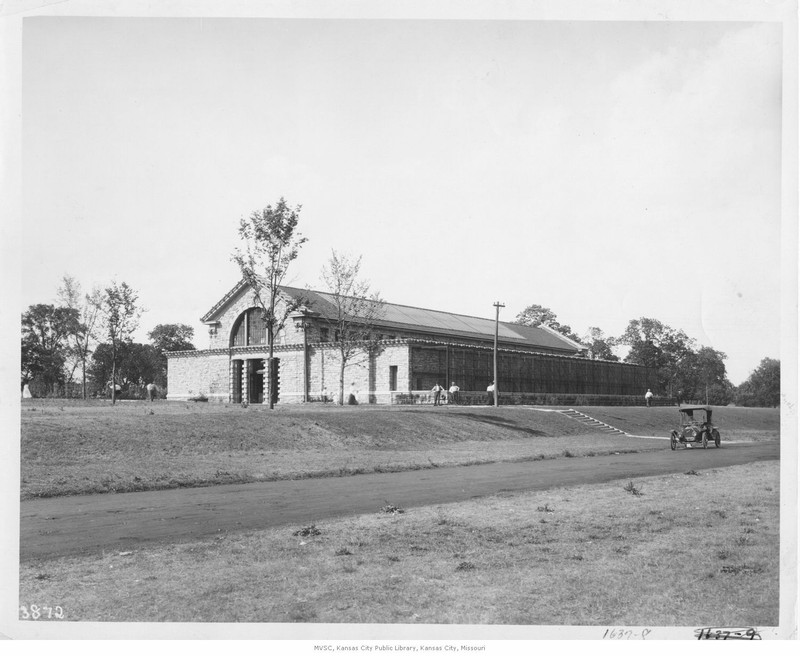
The swinging bridge that connects Kenya to the Congolese Rainforest in Africa, was originally installed in Swope Park in 1907. Photo courtesy of Missouri Valley Special Collections, Kansas City Public Library.
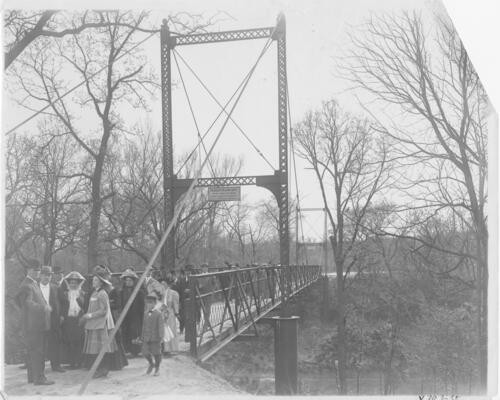
The bear grotto was the first expansion of the Swope Park Zoological Garden in 1915. This photo was taken around 1930.Photo courtesy of Missouri Valley Special Collections, Kansas City Public Library.
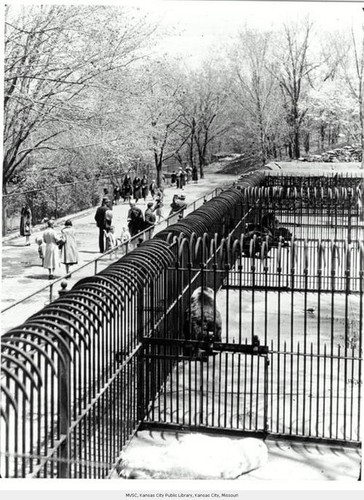
Backstory and Context
Text-to-speech Audio
The idea of a zoo in Kansas City was first proposed in 1907 by city leaders and activists who wanted to create “the largest zoological garden in the United States.” With sites set on Swope Park, a 1,334 acre piece of land donated in 1896 by philanthropist Thomas H. Swope, a zoological society was formed. After requests were made to the Board of Parks and Recreation, $32,000 was funded and 60 acres of Swope Park was granted. A single building was constructed on the north side of the park using fieldstone from a quarry on site. On December 13, 1909, the Kansas City Zoological Gardens officially opened a “bird and animal house.” The animals included four lions, three monkeys, a wolf, a fox, a coyote, a badger, a lynx, an eagle and other birds.
By 1912, the zoological garden became primarily self-sufficient, producing most of the animal’s food from gardens within the park itself. This year also marked the zoo's first expansion with the Bear Grotto. Though the zoo’s growth was slow over its first few decades, they started gaining momentum in the 1940s when they added Monkey Island and Touchtown, a children’s petting zoo that included domestic animals and free-standing play structures. In the 50s, new exhibits included the sea lion pool, the African Veldt (grassland), a giraffe house, and flamingos. An ape house, otter pool, and elephant house were established in the 60s, as well as the Birthday Pavilion by a donation from the Hallmark Company. The 70s brought a dairy barn, gibbon island, the Great Catwalk, and the renovation of Touchtown into the Education Building. In 1972, the zoo began construction of a two mile miniature railroad track from a donation from the Kansas City Southern Railroad. However, the track was shortened to one mile in the 90s.
A bond issue was passed in 1991 that allowed for the expansion of the Zoo from 60 acres to its current 202 acres. With that, Australia was added in 1993, the International Festival petting zoo in 1994, and Africa in 1995, which proved to be quite impressive. The 95-acre, 5-nation representation of Africa saw nearly 40,000 visitors in its first two days. Interestingly, the 277-foot steel suspension bridge that takes visitors from Kenya to the Congolese Rainforest, was originally installed in October 1907 to connect the west side of Swope Park to a proposed athletic field on the east side. By 1998, the Zoo saw record numbers of visitors, as well as the first ever IMAX theater in a zoo. However, the theater closed in 2007.
A private non-profit called Friends of the Zoo, Incorporated acquired the Kansas City Zoo in 2002. They had a focused commitment to improve and support Zoo facilities, animals and education programs. As part of this new management, the Orangutan Primadome opened the same year. In 2003, Randy Wisthoff left Omaha’s Henry Doorly Zoo and became the Kansas City Zoo’s Executive Director. The zoo was beginning to struggle financially after it became privately owned, so Wisthoff immediately sought after a $30 million bond package, which was approved in 2006. In the coming years, over $85 million in capital investments were used for expansion and improvements.
In 2006, the Zoo became a certified breeding facility for baboons and African elephants through the Species Survival Plan by the Association of Zoos and Aquariums. The Promenade, a wide walking path that leads directly to the elephants, and the Discovery Barn were also completed. Exhibits for river otters and trumpeter swans were added in 2008. This same year, the zoo received national recognition. According to “America’s Best Zoos 2008,” the Kansas City Zoo ranked in the top 60 overall, was number 1 for “African Animals and Exhibits,” and top 10 for both “Australian Animals and Exhibits” and “Pachyderms.” In addition, ape expert Jane Goodall complimented that Kansas City has “one of the finest chimpanzee exhibits in North America.” In 2009, the original Zoological building was converted into the Tropics, Polar Bear Passage was completed in 2010, and the African Sky Safari ride opened in June 2011.
The city passed a 1/8th cent sales tax for the Zoological District in 2011, and along with City partnership and private donations, has aided further improvements to the Zoo including the Helzberg Penguin Plaza in 2013. In addition, Stingray Bay opened in 2018 and the elephants got an upgrade in 2020. The elephants’ previous location is now under construction with a multi-exhibit aquarium featuring 600,000 gallons of water, with plans to open in 2023. The Zoo saw new leadership in 2022, as long-time zoo employee and previous Chief Zoological Officer Sean Putney took the reins when Mr. Wisthoff retired.
The Kansas City Zoo continues to fulfill their vision and mission to promote understanding, appreciation, and conservation by providing world-class exhibits and exceptional programs. They now support an annual attendance of over 1 million visitors.
Cite This Entry
Stahly, Nichole. "Kansas City Zoo." Clio: Your Guide to History. March 4, 2022. Accessed March 21, 2025. https://theclio.com/entry/146866
Sources
About Us, The Kansas City Zoo. Accessed March 4th 2022. https://www.kansascityzoo.org/about/about-us.
Kansas City Zoo, Visit KC. Accessed March 4th 2022. http://news.visitkc.com/facts/kansas-city-zoo.
Kansas City Zoo, Wikipedia. Accessed March 4th 2022. https://en.wikipedia.org/wiki/Kansas_City_Zoo.
https://fox4kc.com/news/kansas-city-zoo-ready-to-make-waves-with-new-aquarium/
https://m.facebook.com/KansasCityZoo/posts/10156219670521377?comment_id=10156220613296377
https://kchistory.org/image/swope-park-zoo-building-1
https://kchistory.org/image/suspension-bridge-swope-park
https://kchistory.org/image/swope-park-zoo-10?solr_nav%5Bid%5D=e3ae8921a02a2878cc83&solr_nav%5Bpage%5D=1&solr_nav%5Boffset%5D=0

